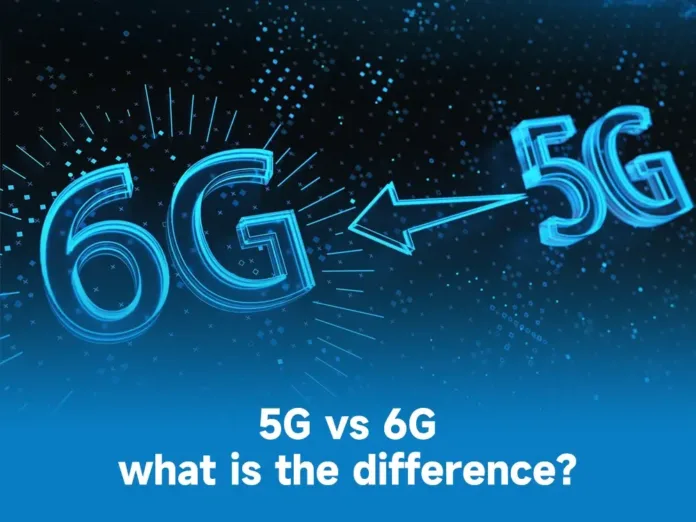
In 2025, the world is standing at the crossroads of a mobile revolution. While 5G networks are still rolling out across many parts of the world, discussions and research surrounding 5G vs 6G technology have already begun shaping the future of connectivity. With each generation of wireless communication, we see vast improvements not only in speed and latency but also in capacity, energy efficiency, and new applications that were previously impossible.
So, what exactly distinguishes 5G vs 6G technology, and what can we expect in the years to come? Let’s explore the evolution, current status, and future possibilities of mobile connectivity.
Understanding the Evolution of Wireless Generations
To understand where we’re headed, it helps to look back:
1G gave us analog voice.
2G introduced digital voice and SMS.
3G brought mobile internet and video calling.
4G revolutionized streaming and mobile apps.
5G, currently in its global rollout phase, offers ultra-fast speeds and low latency, enabling new use cases like autonomous vehicles and smart cities.
Now, the research community is looking ahead to 6G, aiming to launch its commercial presence by 2030.
What is 5G? Where Are We Now?
5G is the fifth-generation mobile network designed to significantly improve upon 4G. It delivers:
Peak download speeds of up to 10 Gbps
Latency as low as 1 millisecond
Massive device connectivity for IoT applications
Many countries have already implemented 5G in urban and industrial areas, while others are still in transition. Its real-world use cases include remote surgeries, automated factories, smart grids, and immersive AR/VR experiences.
However, 5G still faces challenges such as:
Limited rural coverage
High infrastructure costs
Device compatibility constraints
This leads to the inevitable question: What’s next after 5G?
What is 6G? The Vision for 2030 and Beyond
6G is not yet a commercial reality but is under active development by research organizations and telecom leaders. It promises to redefine mobile experiences with:
Speeds up to 100 Gbps or more
Sub-millisecond latency (approaching real-time)
Terahertz (THz) frequencies for extremely high bandwidth
Integration of AI-native networking
Enhanced spatial awareness and holographic communications
In essence, 6G aims to build a hyper-connected, intelligent, and immersive world.
Key Differences: 5G vs 6G Technology
| Feature | 5G | 6G |
|---|---|---|
| Max Speed | Up to 10 Gbps | Potentially 100+ Gbps |
| Latency | ~1 ms | <0.1 ms |
| Spectrum | mmWave (30-300 GHz) | Terahertz (100 GHz – 10 THz) |
| Deployment | Ongoing globally | Expected post-2030 |
| Use Cases | IoT, AR/VR, Smart Cities | Digital twins, holography, AI-driven services |
The biggest transformation lies in 6G’s ability to merge physical and digital realities, which will support next-gen connectivity for smart environments, including robotics, space-based internet, and autonomous infrastructure.
Why 6G Is Not Just “Faster 5G”
While mobile internet speed is a core aspect, 6G is more than just speed. It will fundamentally alter how devices and humans interact. Imagine:
Brain-computer interfaces
Real-time language translation via AR glasses
Zero-lag cloud gaming across the globe
Smart clothing with health-monitoring sensors
All of these require next-generation connectivity far beyond what 5G can provide.
5G Limitations That 6G Aims to Solve
Even though 5G is a technological marvel, it’s not without its flaws:
Coverage gaps in rural and remote regions
Power consumption concerns
Lack of edge intelligence
6G envisions AI-powered networks that are more energy-efficient, intelligent, and capable of adapting to real-time demands.
6G Rollout Expectations and Timeline
While 5G deployment is still maturing in most regions, early work on 6G rollout expectations has begun. Here’s a projected roadmap:
2025–2026: Standardization work and initial trials
2028–2029: Pilot rollouts and hardware testing
2030 onward: Gradual commercial deployment
Countries like South Korea, Japan, the U.S., and members of the EU are heavily investing in 6G research, aiming to lead the charge in future wireless leadership.
What Industries Will Benefit the Most from 6G?
Here are sectors poised for transformation:
Healthcare: Remote robotic surgeries in real-time
Education: Holographic virtual classrooms
Transportation: Fully autonomous traffic ecosystems
Entertainment: Hyper-realistic AR/VR and metaverse platforms
Manufacturing: AI-powered, self-optimizing smart factories
Is It Too Early to Talk About 6G?
Not at all. Discussing 5G vs 6G technology today prepares policymakers, infrastructure providers, and developers to align their goals. The shift from 5G to 6G will not be a sudden leap but a carefully orchestrated evolution. Businesses that start preparing now will lead the market when 6G becomes the new standard.